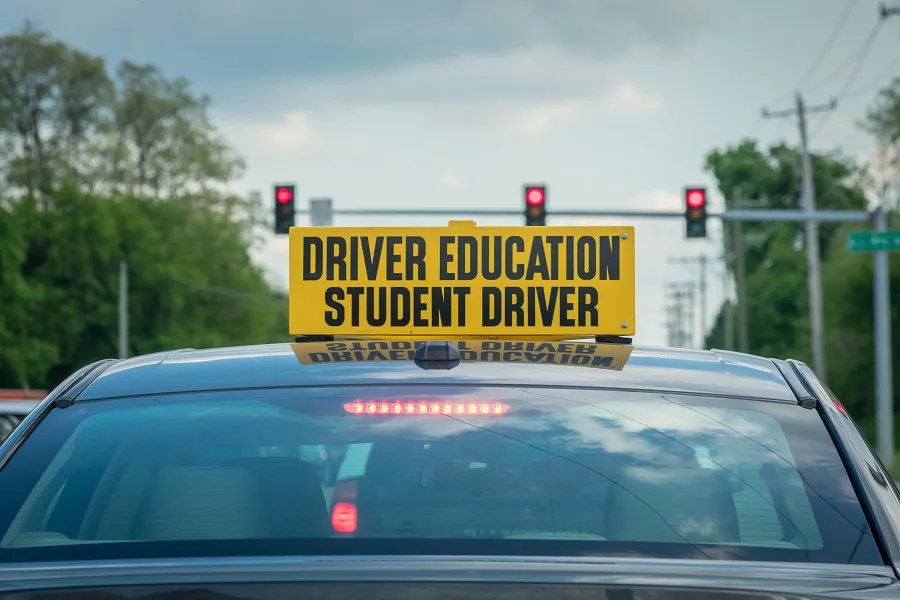There is no fee unless we win!
EN

- EN
- ES


Teens who took driver's education were 24% less likely to be involved in a car crash with a fatality or injury compared to those who did not take the course.
However, new drivers still start as rookies, and with that inexperience, they present a unique risk on the roads. When a permit driver causes a crash — especially during a driving lesson — figuring out who’s responsible can be tricky. Is it the student? The driving instructor? The school?
This article breaks down how liability works when car accidents involve new drivers, and what to do if you’re hit by one.
Several parties may share responsibility depending on who was involved, how the crash happened, and what steps were (or weren’t) taken to prevent it.

Even though permit holders are still learning, they’re expected to follow all traffic laws. That means driving at or under the speed limit, stopping at red lights, signaling properly, and staying focused.
If a student driver causes a car accident by making a dangerous turn, driving distracted, or disobeying the rules of the road, they can be found at fault, just like any other driver.
Some auto insurance policies may cover the permit holder, especially if they’re driving a parent’s car with permission. But that’s not guaranteed, and if the student wasn’t properly listed or supervised, the insurance company might try to deny coverage.

In a driver’s education vehicle, the instructor is more than just a passenger. They often have their own brake pedal and are expected to keep the young driver safe.
An instructor may share liability if:
Instructors are licensed professionals, and they’re expected to catch mistakes before they lead to crashes.

In some situations, the driving school itself may be held responsible, especially if they were negligent in hiring or training.
For example, a school might be at fault if it:
It’s also worth noting: if the driving lesson was part of a public school program, additional legal protections might apply. Public institutions often have immunity rules that make filing a claim more complicated.
Whose insurance will pay? RCW 46.82.310(7) mandates that driver training schools must carry at least $1 million in automobile liability coverage (including for injuries and property damage) and maintain coverage throughout the license period. This policy often becomes the primary coverage in crashes involving a student driver during a formal lesson.
Whether the policy covers the permit driver depends on several factors:
If these conditions aren’t met, the insurance company may try to shift blame or reduce payouts. In these situations, it’s often necessary to file a claim against another party — such as the school or instructor — or work with a lawyer to dispute the insurer’s decision.

If you're involved in a car accident with a learner’s permit holder, here’s what to do:
The more documentation you have, the easier it will be to hold the right party accountable — whether that’s the student, driving instructor, or school.
Crashes involving permit drivers often lead to finger-pointing, with multiple parties trying to avoid blame. But if you’re injured, your focus should be on getting better, not dealing with confusing insurance policies or figuring out who’s responsible.
Lehmbecker Law’s Seattle car accident attorneys help injured drivers untangle these situations and pursue the compensation they’re owed. Whether you were hit by a student driver, driving school vehicle, or instructor, we’ll investigate the crash, handle the insurance company, and fight for your rights. Contact us for a free consultation.

We’ll sort out who’s at fault, deal with the insurance company, and make sure you aren’t left paying for someone else’s error.